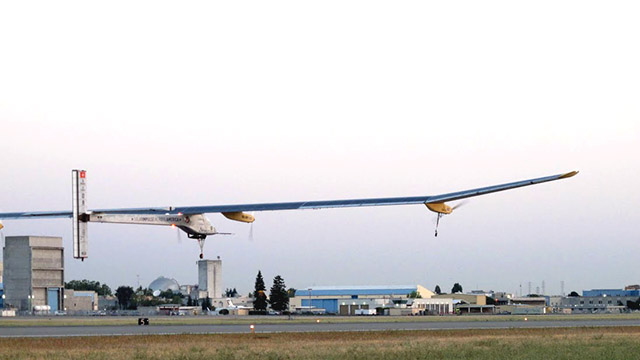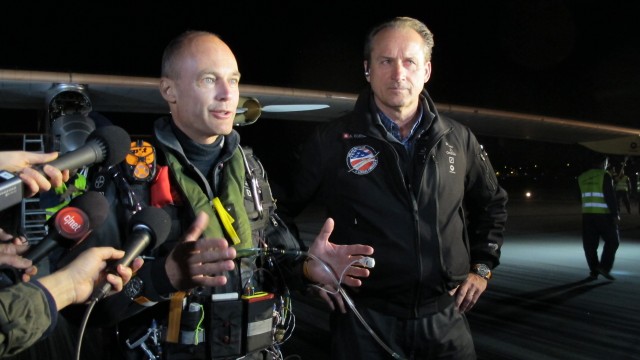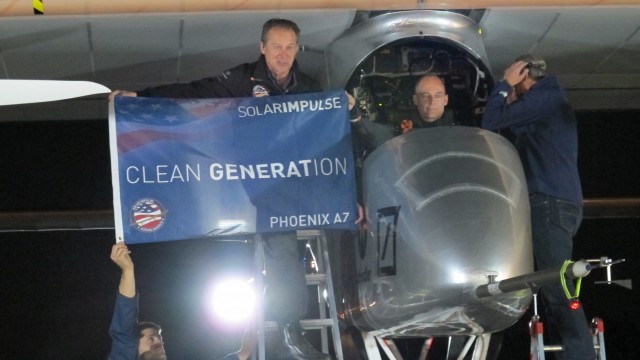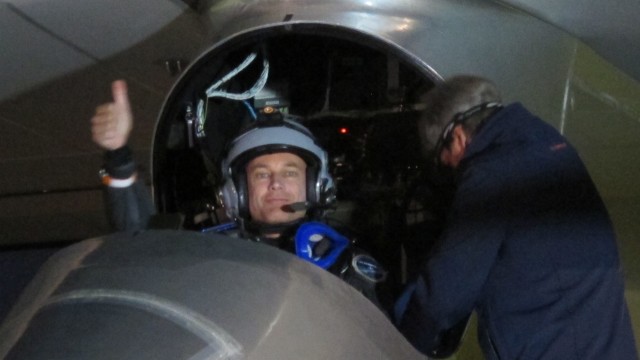
Lighter than an SUV and covered with more than 12,000 solar cells, Solar Impulse, the world's first solar plane that can fly day and night without recharging, launched from Moffett Field this morning in a cross country voyage. The $150million project initiated by co-pilots Bertrand Piccard and André Borschberg will test the limits of solar aviation and be a proving ground for a planned trip across the world in 2015.
At 5:15am, a crowd of 25 journalists gathered around Piccard as he answered questions about what it's like to fly the plane and whether he was exhausted. "I'll be in the air for 20 hours but I've been dreaming of this flight for 10 years so there is no time to be tired," he said. Researchers from the NASA Ames Research Center also stood 50 feet from the tarmac to catch a glimpse of the plane taking off.
The single-seater plane was financed by several large corporations including Omega, Solvay and Deutsche Bank. The companies developed new technologies in order to create the aircraft. The monocrystalline solar cells needed to be flexible enough to curve atop the wings and the resulting cells are the thickness of a human hair.
Solar cells power four electric engines and excess energy is stored in four lithium batteries located below the wings. Since the batteries account for 25 percent of the plane's total weigh other elements had to be eliminated. There is no heating or cooling system and many metal parts were replaced with plastic; Solvay designed ultra-light polymers that could replace metal in the instrument panels and control box.


